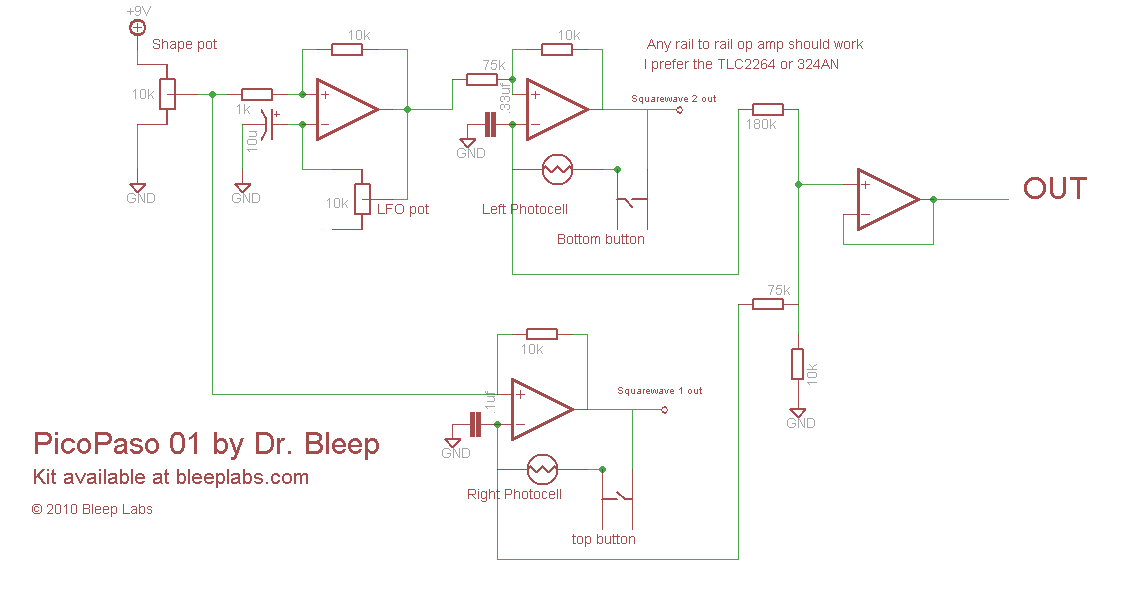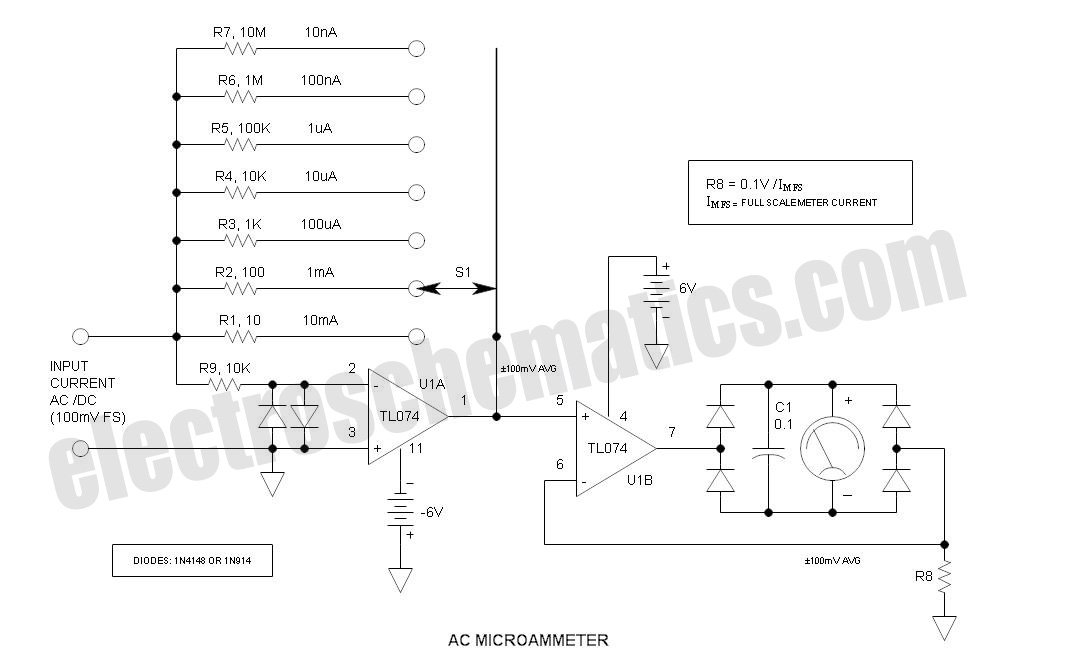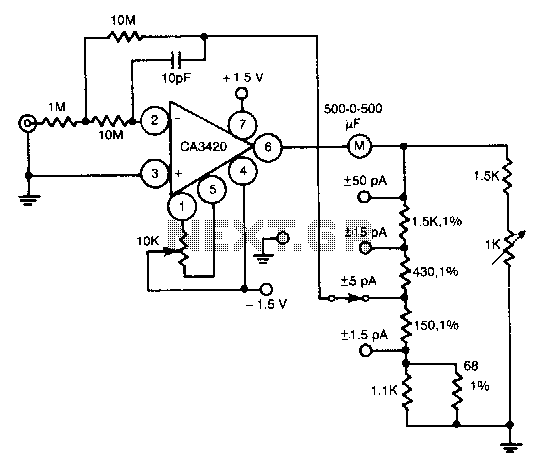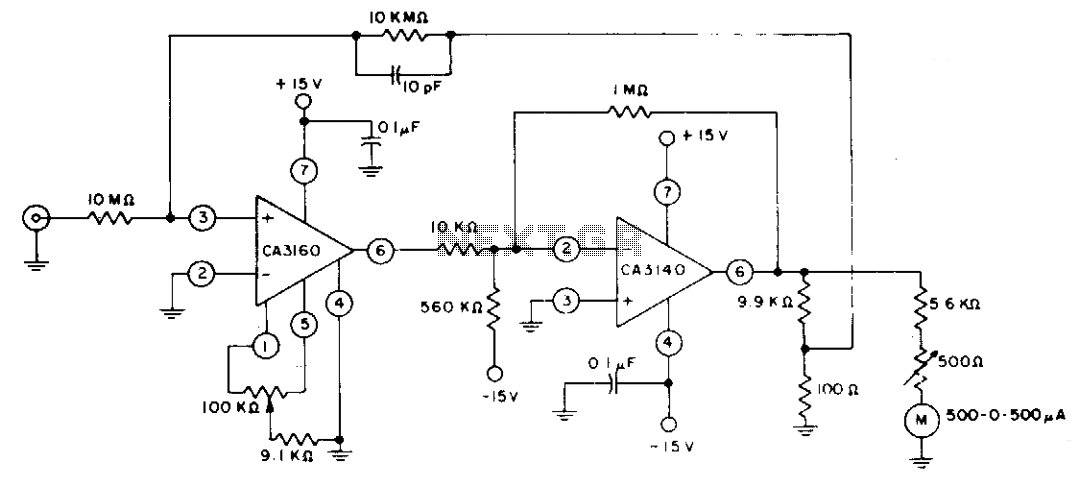
Pico ammeter
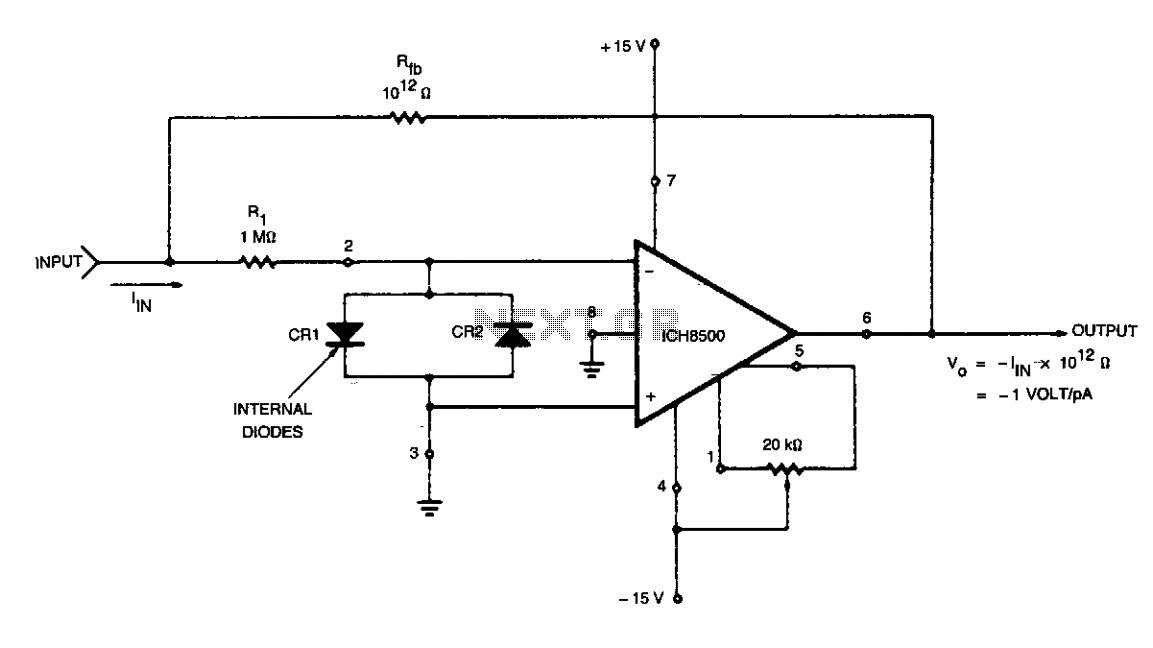
Care must be taken to eliminate any stray currents from flowing into the current summing node. This can be accomplished by ensuring that all points surrounding the input are maintained at the same potential as the input. In this case, the potential of the input is at virtual ground, or 0V. Therefore, the case of the device is grounded to intercept any stray leakage currents that may otherwise exist between the ±15V input terminals and the inverting input summing junctions. Feedback capacitance should be kept to a minimum in order to maximize the response time of the circuit to step function input currents. The time constant of the circuit is approximately the product of the feedback capacitance (C) and the feedback resistor (R). For instance, the time constant of the circuit is 1 second if C = 1pF. Thus, it takes approximately 5 seconds (5 time constants) for the circuit to stabilize to within 1% of its final output voltage after a step function of input current has been applied. A feedback capacitance of less than 0.2 to 0.3pF can be achieved with proper circuit layout.
To ensure optimal performance in electronic circuits, particularly those involving current summation, it is crucial to eliminate the influence of stray currents at the current summing node. This is achieved by equalizing the potential of all points surrounding the input to the same level as the input itself, which is set to a virtual ground (0V). The grounding of the device's case serves a dual purpose: it not only stabilizes the input potential but also intercepts any stray leakage currents that may arise between the ±15V input terminals and the inverting input summing junctions.
In designing circuits with high-speed response requirements, minimizing feedback capacitance is essential. Excessive capacitance can slow down the circuit's response to input signals, particularly when subjected to step function input currents. The time constant, a critical factor in determining the speed of the circuit's response, is calculated as the product of the feedback capacitance (C) and the feedback resistor (R). For example, if the feedback capacitance is set at 1pF, the resulting time constant would be 1 second. It is important to note that the circuit will take approximately 5 seconds, which corresponds to five time constants, to stabilize within 1% of its final output voltage after a step function input current is applied.
Achieving a feedback capacitance value below 0.3pF necessitates careful circuit layout and design considerations. This involves optimizing the physical arrangement of components to minimize parasitic capacitance and ensuring that the feedback path is as short as possible. By adhering to these principles, the circuit can achieve rapid stabilization and maintain high fidelity in the presence of fast-changing input signals.Care must be taken to eliminate any stray currents from flowing into the current summing node. This can be accomplished by forcing all points surrounding the input to the same potential as the input. In this case the potential of the input is at virtual ground, or OV. Therefore, the case of the device is grounded to intercept any stray leakage currents that may otherwise exist between the ±15 V input terminals and the inverting input summing junctions.
Feedback capacitance should be kept to a minimum in order to maximize the response time of the circuit to step function input currents. The time constant of the circuit is approximately the produce of the feedback capacitance C^ times the feedback resistor R^. For instance, the time constant of the circuit is I sec if C^, = lpF. Thus, it takes approximately 5 sec (5 time constants) for the circuit to stabilize to within 1% of its final output voltage after a step function of input current has been applied.
of less than 0.2 to 0.3 pF can be achieved with proper circuit layout. 🔗 External reference
To ensure optimal performance in electronic circuits, particularly those involving current summation, it is crucial to eliminate the influence of stray currents at the current summing node. This is achieved by equalizing the potential of all points surrounding the input to the same level as the input itself, which is set to a virtual ground (0V). The grounding of the device's case serves a dual purpose: it not only stabilizes the input potential but also intercepts any stray leakage currents that may arise between the ±15V input terminals and the inverting input summing junctions.
In designing circuits with high-speed response requirements, minimizing feedback capacitance is essential. Excessive capacitance can slow down the circuit's response to input signals, particularly when subjected to step function input currents. The time constant, a critical factor in determining the speed of the circuit's response, is calculated as the product of the feedback capacitance (C) and the feedback resistor (R). For example, if the feedback capacitance is set at 1pF, the resulting time constant would be 1 second. It is important to note that the circuit will take approximately 5 seconds, which corresponds to five time constants, to stabilize within 1% of its final output voltage after a step function input current is applied.
Achieving a feedback capacitance value below 0.3pF necessitates careful circuit layout and design considerations. This involves optimizing the physical arrangement of components to minimize parasitic capacitance and ensuring that the feedback path is as short as possible. By adhering to these principles, the circuit can achieve rapid stabilization and maintain high fidelity in the presence of fast-changing input signals.Care must be taken to eliminate any stray currents from flowing into the current summing node. This can be accomplished by forcing all points surrounding the input to the same potential as the input. In this case the potential of the input is at virtual ground, or OV. Therefore, the case of the device is grounded to intercept any stray leakage currents that may otherwise exist between the ±15 V input terminals and the inverting input summing junctions.
Feedback capacitance should be kept to a minimum in order to maximize the response time of the circuit to step function input currents. The time constant of the circuit is approximately the produce of the feedback capacitance C^ times the feedback resistor R^. For instance, the time constant of the circuit is I sec if C^, = lpF. Thus, it takes approximately 5 sec (5 time constants) for the circuit to stabilize to within 1% of its final output voltage after a step function of input current has been applied.
of less than 0.2 to 0.3 pF can be achieved with proper circuit layout. 🔗 External reference
